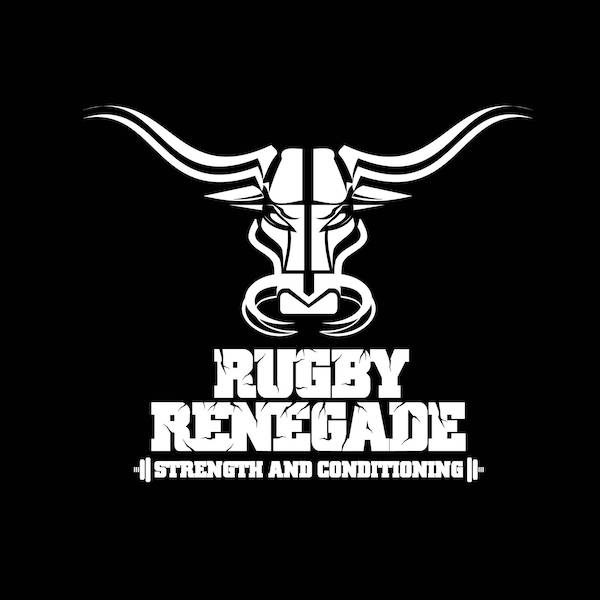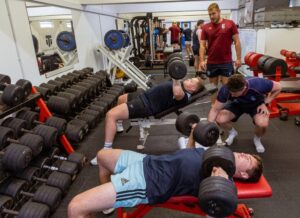Heart rate training is often discussed for endurance athletes but not for team sports and rugby players. And yet pro players all have their heart rates monitored daily during training. It’s relatively cheap and easy to get hold of heart rate data these days with more and more devices and apps coming onto the market so here we give you some examples of how you can use heart rate training to individualise your training and get better results.
Training in Zones
You’ve probably heard someone at the gym say “I’m working in the fat burning zone” and while that training prescription was based off research it has been shown to be a bit more complicated than that! Using training zones does however help us prescribe training as they will dictate the intensity performed and we know we can produce certain desired adaptations. here are a few training zones that might be helpful to use to improve your fitness;
110-130 bpm Recovery
Work in this training zone will have a small training effect on the heart and cardiovascular system but it’s a low enough intensity that it won’t be compete for adaptive reserves like improving strength and size. This type of training is ideal for recovery sessions and light aerobic development and yes you will burn fat so can be a good extra for any players who need to reduce bodyfat.
130-150 bpm Aerobic Capacity
At this training intensity we know you will develop aerobic capacity by strong adaptations to the heart notably increasing cardiac output. This is ideal training in the early stages of a training cycle to increase aerobic capacity and build that “base” that everyone talks about. There a two ways to perform this type of work;
- Use the heart rate to dictate the pace ie. if you heart rate begins to go over 150 bpm slow down and if it goes under 130 bpm speed up!
- Set a pace and use the heart rate as the indicator to rest. ie. Rowing at 1:45/500m until you break 150 bpm then rest until ~130 bpm and begin again. Over time you can see how long you can maintain that pace before having to rest.
>85% Max Heart Rate
Through research we know that roughly just under half of a game players are at over 85% of their maximum heart rate and like high intensity repeat efforts it’s these periods of the game that help dictate the winners and losers. It is therefore important for your training to expose you to work efforts over 85% of max heart rate and to increase the amount of work you can perform at these high heart rates. First how to calculate your heart rate:
Max Heart Rate = 220 – Age
85% MHR = MHR x 0.85
Example: 22 year old player
MHR = 220-22
MHR = 198 bpm
85% MHR = 198 x 0.85
85% MHR = 168 bpm
There are any number of training methods to achieve this and they are beyond the purpose of this article but knowing your own heart rate targets will allow you efficiently track the work you’re doing and modify it to your own needs and ensure you’re getting fitter.
Heart Rate to dictate rest periods
This is a great way to perform high intensity repeat intervals where, instead of using time to dictate rest periods, you wait until your heart rate has reached a certain level before starting the next work interval. You can use this for some types of strength work but of course it only takes into account the cardiovascular systems recovery and not the nervous system so has it’s limitations in that regard.
A good example would be hill sprints trying to recover using your aerobic energy system and not slipping into too much glycolysis. You perform your rep and then wait until your heart rate drops back to 130 bpm before starting your next rep. This keeps you in an aerobic training zone helping your fast twitch muscle fibres become more oxidative and be able to recover quicker.
Of course you can set it up depending on your goals and if you don’t want as much fatigue you could wait until 110-100bpm allowing more recovery and more quality in your work intervals. The best thing about this is it is dictated by your own body and your own recovery level, it’s completely individual to you. This leads nicely onto the next way you can use heart rate training…
Heart Rate Recovery
If you used the above training approach you could record how long it takes you to recover and keep track of changes. Ideally you’d see that you’d develop the ability to recover quicker and this is an often forgotten fitness ability. You probably know someone who in games makes one run and is knackered the rest of the game and on the other hand the guy who before you get into a huddle is fresh as a daisy. You want to be the second guy! Rugby is about repeating high intensity efforts and the quicker you can recover the more efforts you can perform during a game.
Training in the previously mentioned manner is one way of keeping track of heart rate recovery but you can look at the last minute after any training session to see how quickly it recovers. a reduction of 20 bpm in the first minute is a good start and elite athletes will get up to 40 bpm reduction.
Resting Heart Rate
Your resting heart rate alone is an indicator of your fitness level. Generally under 60 beats per minute (bpm) is expected of someone with a decent aerobic capacity but we’d expect to see under 55 bpm and elite athletes under 50 bpm. Monitoring your resting heart rate over time can helpful in two ways;
- Show your progress ie. over time your resting heart rate decreasing (although this is a slow process)
- Monitoring fatigue levels, sudden variations to baseline resting heart rate could signify overtraining
To use resting heart rate to monitor fatigue levels you will need a few weeks of consistent data to make any real conclusions. If your resting heart rate spikes or dips by 5-7 bpm this may indicate excessive fatigue and you could do with taking an easy or recovery day.
For best results measure your resting heart rate first thing in the morning and before exercise or consuming caffeine.
Heart Rate Variability
Heart rate variability goes a step further than resting heart rate and looks at the differences between heart beats. This has been shown to be a good indicator of overall systemic stress so can also be used to dictate your training volume and intensity. It is relatively easy to measure, usually takes 3 mins and there are more and more apps that do it.
For an in depth discussion of Heart Rate Variability and it’s use in team sports check out our podcast with HRV Expert Andrew Flatt
Summary
Heart Rate training isn’t going to make or break your training but it can be a helpful addition to get more from your training program and individualise how you adapt your training whether its monitoring your recovery or prescribing training loads.





